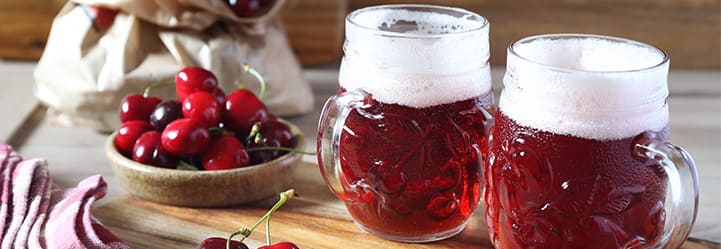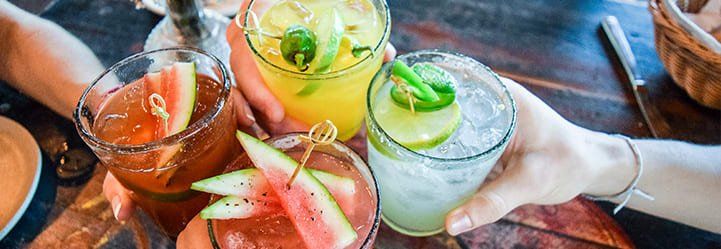Fruited beer: how has it influenced the beer industry?
Alimentos SAS • Jun 23, 2021

Beer is an incredibly versatile drink. Brewers in a lot of countries are pushing the limits on what can be added to beer. On top of the main ingredients – water, grain, yeast, and hops – coffee, chocolate, fruits, marshmallows, nuts, spices, and toffee, are some of the other ingredients that are being added. Let’s have a look at fruited beer.
Fruited beer: style characteristics
Appearance
The appearance of the beer should showcase the base beer style. A lighter colored fruit beer, like a lager, may pick up a slight tinge of the color of the fruit, as might the beerhead. Certain fruited beers may appear a little hazy too.
Aroma
The aromatics of hop character, maltiness, and yeast by-products may be less noticeable in a fruited beer than a beer without fruit. Some fruits, like cherry and raspberry, will give a fruited beer a more robust aroma than blueberries and peaches for example. A good, fruited beer won’t have an artificial aroma or be overpowering. Instead, it will complement the base style.
Mouthfeel
This will depend on the base style, although the fruit will contribute to a thinner body.
Flavor
One should be able to pick up the character notes given by the fruit. The beer, however, shouldn’t taste anything as non-alcoholic fruit drinks do. The flavor could range from delicate to robust and will be influenced by the base style of the beer. There should be a balance between the components of the original style and the fruit.
How popular is fruited beer?
The most common American fruited beer is the fruit wheat beer. Some beer drinkers may look at fruit beer as a cover up for a low-quality beer which needs a fruit flavor to make it palatable. However, fruit flavored beers are growing in popularity and modern fruited beers which are subtle in flavor are being paired with a wide variety of foods.
The low ABV of low-alcohol fruit beer is boosting the popularity of fruited beer among health-conscious consumers, boosting market demand, and ultimately being a beneficial influence on the fruit beer industry growth. The global fruit beer market size is expected to reach $570 million dollars by 2026 (ReportLinker, 2020).
According to Nielsen’s Craft Beer Insights Poll, conducted in May 2018, weekly craft beer drinkers report that they are 39 percent more interested in drinking fruit beers now than they were a few years ago (L.B. Foster, 2018).
Some curiosities about fruited beer
The earliest evidence of brewing beer with fruit is by the Neolithic Chinese villagers in 700BC. They made a beverage that consisted of honey, rice, and hawthorn fruit and/or grapes. There is also early evidence of Egyptians brewing beer with dates and pomegranates. It was the Belgians who started the tradition of modern fruited beers in 1930 with cherry Lambics – wheat beers. In the 1950’s they added raspberry Lambics, and in 1980, peach Lambics. These days brewers are experimenting brewing with all sorts of fruits.
Another key factor in the growing popularity of fruited beer, is the fruit itself. Fruit has become more popular and readily available in day-to-day life. Data from the U.S. Department of Agriculture Economic Research Service shows the availability of fresh fruit in America grew some 40 percent between 1970 and 2018. Trends in the food sector influence the drink sector – including alcohol. It’s no surprise then that the hard seltzer has become so popular.
Fruit beer has had a major impact on the beverage industry – more specifically the beer industry. It has also had a positive impact on the fruit industry as most modern brewers use real fruit puree in their brews instead of just fruit flavoring. As we can see, fruit beer is at its peak. We can only hope that the industry continues to grow, for their benefit, and for the benefit of the fruit beer fans.














